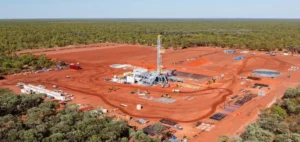For the week ending April 12, forecast injections of 44 Bcf into natural gas stocks represent around 72% of injections made during the same week in previous years, and of the five-year average, both amounting to 61 Bcf. This level of injection is significant, but remains below historical expectations, indicating a persistent surplus in US inventories.
Details of market fundamentals
During the week under review, natural gas demand fell by 6.9 Bcf/day due to milder temperatures, mainly affecting the residential and commercial sectors. At the same time, domestic gas production declined, as did imports from Canada, with a combined reduction in available supply of almost 1.3 Bcf/day.
Outlook and implications for stocks
If the 44 Bcf forecast is confirmed, US inventories would reach 2,327 Tcf. This increase, compared with the average increase of 59 Bcf and 77 Bcf for the previous year reported during the corresponding week, illustrates a market that is still saturated but potentially in the process of rebalancing.
Market reactions and expectations
Despite a relatively high injection forecast, natural gas prices at the Henry Hub exchange point fell by almost 30 cents, or around 15%, to around $1.65/MMBtu on April 16. This price fall reflects persistent uncertainty about the balance between supply and demand.
S&P Global’s models anticipate an even larger injection for the following week, potentially doubling to over 80 Bcf. This forecast is based on adjustments to supply and demand fundamentals, as well as on the expected reactions of market players to current price signals.





















